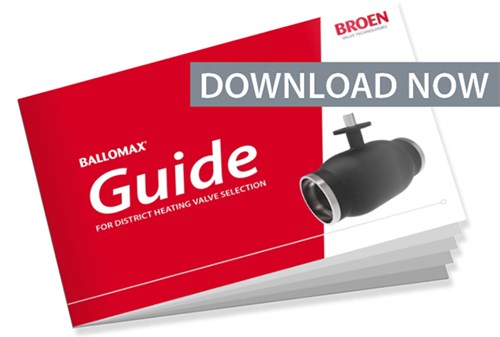Butterfly valves
A butterfly valve is a valve that isolates or regulates the flow of a fluid and the closing mechanism is a disk that rotates.
BROEN butterfly valves for district heating offer a safe and modern construction for use as a shut-off valve and regulating valve in district heating and district cooling systems, but is also in operation in gas and steam applications.
The butterfly valves have a metal/metal sealing available. This concept means there is no traffic friction during opening and closing of the butterfly valve. The disc loses contact with the seat immediately after the start of opening.
In addition to its cut-off function the butterfly valve may be used as a regulating (control) valve. The mechanical worm gearboxes mounted on the butterfly valves are fitted with a disc opening angle indicator.
Key benefits with BROEN butterfly valves:
- All CE-marked valves are approved according to PED 2014/68/EU - module H
- Highest Class A tightness - EN 12266
- No periodic service
- ISO 5211 flange enables switch of gear or actuator without removing the valve from the pipeline
- Vertical and horizontal installation
- Temperature -30 ° C to + 425 ° C
Which butterfly valve should I choose?
The selection of butterfly valves depends on which application you need it for.
Please contact us for more information and assistance in choosing the right product for your project.
Download the BROEN butterfly valves brochure to learn more.
How much does a butterfly valve cost?
Butterfly valves come in many shapes and sizes and for different purposes so it is difficult to say something general about pricing. However, please contact us for a fair and competitive price next time you have a project where you need butterfly valves.
How do I move forward?
For more information about butterfly valves please contact us at broen@broen.com or +45 64712095
District heating valve selection guide
What should you consider when choosing a valve for district heating? We have answered that question in our new guide, describing five parameters that you should take into account to avoid mistakes.
Download guide
